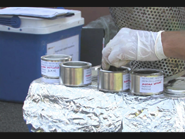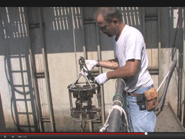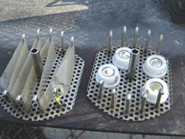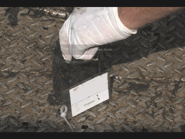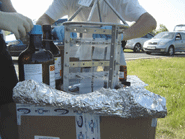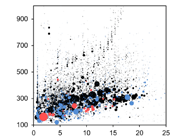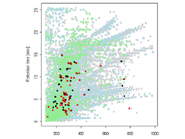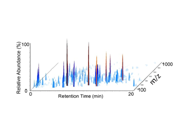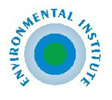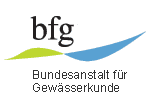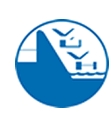You are here
Passive Sampling of Emerging Pollutants
 NORMAN Expert Group Meeting: Passive Sampling of Emerging Pollutants: state of the art and perspectives
NORMAN Expert Group Meeting: Passive Sampling of Emerging Pollutants: state of the art and perspectives
27 May 2009 - Prague, The Czech Republic
Passive samplers represent an innovative monitoring tool for the time-integrated measurement of bioavailable contaminants in water and sediment. Passive sampling technology is proving to be a reliable, robust and cost-effective tool that could be used in monitoring programmes across Europe. These devices are now being considered as a part of an emerging strategy for monitoring a range of priority and emerging pollutants.
However, a number of problems still need to be solved and there is an urgent need to harmonise work in this area, and to bring together the disparate research groups to develop sound validation procedures for all aspects of the use of passive sampling devices, including laboratory calibration, handling, field deployment, chemical or toxicological analysis and data interpretation.
The first NORMAN Expert Group meeting on passive sampling of emerging pollutants was organised as a satellite workshop of the 3rd International Passive Sampling Workshop and Symposium (IPSW 2009), held in Prague, Czech Republic. The meeting was held on May 27, 2009.
 The participants included experts from the NORMAN network and invited speakers involved in research, development and application of passive sampling devices for monitoring emerging pollutants. The meeting provided an opportunity for delegates to discuss important developments in passive sampling techniques for monitoring emerging pollutants with the aim of harmonising work in this area, and planning the development of sound validation procedures for the use of passive sampling devices, including laboratory calibration, handling, field deployment, chemical and ecotoxicological analysis.
The participants included experts from the NORMAN network and invited speakers involved in research, development and application of passive sampling devices for monitoring emerging pollutants. The meeting provided an opportunity for delegates to discuss important developments in passive sampling techniques for monitoring emerging pollutants with the aim of harmonising work in this area, and planning the development of sound validation procedures for the use of passive sampling devices, including laboratory calibration, handling, field deployment, chemical and ecotoxicological analysis.
The meeting was focused on passive sampling of emerging pollutants in surface waters. The main issues addressed at the meeting included:
- use of PS coupled with ecotoxicity testing/chemical analysis in identification of emerging pollutants
- capabilities and limitations of the various passive samplers in relation to environmental conditions, ease of operation, cost, detection limits, and quality assurance and quality control
- the problems related to quantification of pollutants, e.g. the development and use of performance reference compounds (PRCs) and sampler/water partition coefficients, and the translation of laboratory calibrations to field deployments
- techniques and materials applicable for sampling "difficult" compounds e.g. labile compounds, surfactants, groups of compounds with a specific toxicological mode of action
- utility and validity of the passive sampling technologies and methodologies within a regulatory context
- consensus approach to the normation of passive sampling technology
- agreement on an interlaboratory calibration study for 2010 (selection of samplers, prioritisation of analytes, sampling sites).
The minutes [299 kB] from the meeting, including agenda and participant list, as well as speakers’ presentations are available as pdf files.
A report of IPSW2009, including the NORMAN Expert Group meeting, was published in the Journal of Environmental Monitoring.
As a result of this Expert Group meeting a Position paper [1592 kB] summarising the position of the experts on the topic of passive sampling and its application in the field of emerging substances was published in November 2011.
Moreover, the participants discussed the feasibility of interlaboratory calibration exercises on passive sampling of emerging pollutants to be organised within the NORMAN network. The discussion provided several recommendations [94 kB] to the potential organisers of such a study.
The result of this intense work was the successfull organisation of an interlaboratory study on passive sampling of emerging pollutants in May - June 2011, sponsored by NORMAN and JRC (Ispra) in support of the Chemical Implementation Strategy of the Water Framework Directive (CIS WFD). The objective of this intercomparison exercise, open to participants from commercial, academic and regulatory laboratories, was to present the variability in data by comparing results from various passive samplers sent by participating laboratories exposed to water at a single (reference) site. The target substances included polar pesticides, pharmaceuticals, biocides, steroid hormones and brominated flame retardants.
Organiser: VUVH Slovak Water Research (SK)
contact : Branislav Vrana
List of participants
MEETING PROGRAMME AND PRESENTATIONS
-
Welcome and introduction to the expert group meeting objectives
Branislav VRANA , Water Research Institute, Bratislava, Slovakia -
NORMAN - Network of reference laboratories and related organisations for monitoring and biomonitoring of emerging environmental pollutants
Jaroslav SLOBODNIK chairman of the NORMAN network, Environmental Institute, Slovakia -
Combining passive sampling with bioassays and evaluating effects of flow on passive sampler performance under environmental conditions
Etienne Vermeirssen , EAWAG, Switzerland -
Role of passive sampling in regulatory monitoring
Ian Allan , NIVA, Norway -
A novel approach to passive sampling - continuous flow-integrative passive sampler
Ignacio Valor , LABAQUA, Spain -
Passive sampling and analysis of cyclic siloxanes
Chris Sparham , Unilever, United Kingdom -
Passive sampling of pharmaceuticals and other polar emerging pollutants
Catherine Gonzalez , EMA, France and Anne Togola BRGM, France -
Normation of passive sampling technology
Richard Greenwood , University of Portsmouth, United Kingdom - Discussion: Prioritisation of emerging pollutants - where to focus future research?
- Discussion: Conversion of passive sampling data into concentrations in the sampled media
- Discussion: An interlaboratory calibration study for 2010
